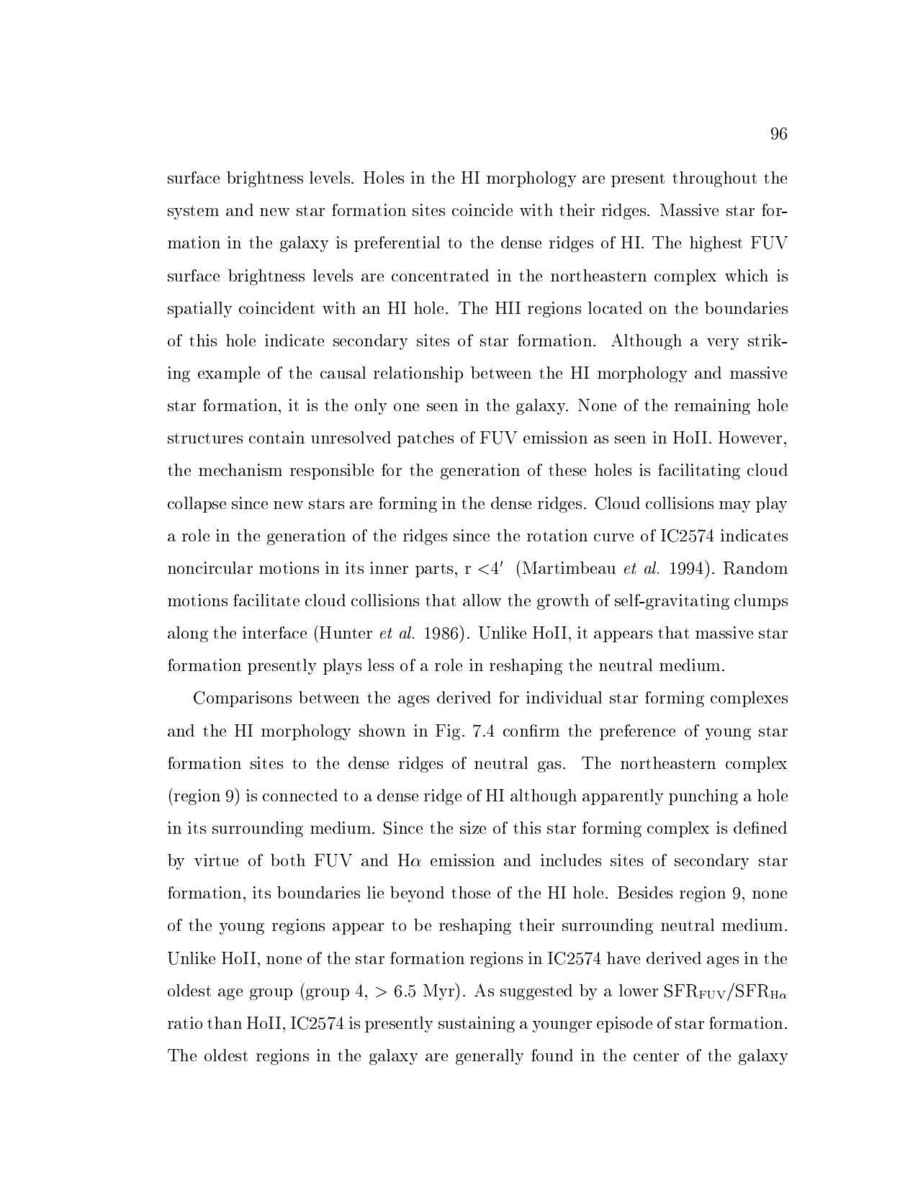Astronomical Applications Department, U.S. Naval Observatory thesis Page 110

96
surface brightness levels. Holes in the HI morphology are present throughout the
system and new star formation sites coincide with their ridges. Massive star for-
mation in the galaxy is preferential to the dense ridges of HI. The highest FUV
surface brightness levels are concentrated in the northeastern complex which is
spatially coincident with an HI hole. The HII regions located on the boundaries
of this hole indicate secondary sites of star formation. Although a very strik-
ing example of the causal relationship between the HI morphology and massive
star formation, it is the only one seen in the galaxy. None of the remaining hole
structures contain unresolved patches of FUV emission as seen in HoII. However,
the mechanism responsible for the generation of these holes is facilitating cloud
collapse since new stars are forming in the dense ridges. Cloud collisions may play
a role in the generation of the ridges since the rotation curve of IC2574 indicates
noncircular motions in its inner parts, r 4
0
Martimbeau
et
al.
1994. Random
motions facilitate cloud collisions that allow the growth of self-gravitating clumps
along the interface Hunter
et
al.
1986. Unlike HoII, it appears that massive star
formation presently plays less of a role in reshaping the neutral medium.
Comparisons between the ages derived for individual star forming complexes
and the HI morphology shown in Fig. 7.4 con rm the preference of young star
formation sites to the dense ridges of neutral gas. The northeastern complex
region 9 is connected to a dense ridge of HI although apparently punching a hole
in its surrounding medium. Since the size of this star forming complex is de ned
by virtue of both FUV and H emission and includes sites of secondary star
formation, its boundaries lie beyond those of the HI hole. Besides region 9, none
of the young regions appear to be reshaping their surrounding neutral medium.
Unlike HoII, none of the star formation regions in IC2574 have derived ages in the
oldest age group group 4, 6.5 Myr. As suggested by a lower SFR
FUV
SFR
H
ratio than HoII, IC2574 is presently sustaining a younger episode of star formation.
The oldest regions in the galaxy are generally found in the center of the galaxy
